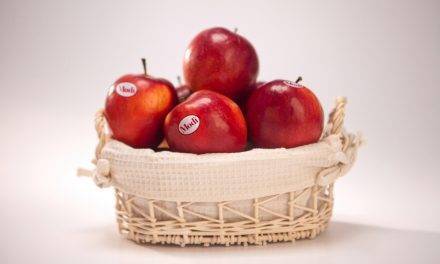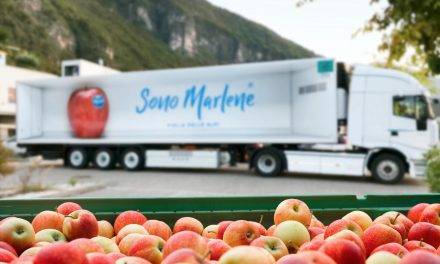Due the celebration of the Black History Month, the Brain Food Blog, the blog of the IFT, published a post recognizing the accomplishments of black scientists, innovators, and inventors whose work in various scientific disciplines has had a lasting impact on the science of food and the global food system
We reproduce it simply due the value of the innovations
There are vastly more people of color working to advance the science of food today than there were 50 years ago. While it’s encouraging to see these numbers grow, some may not realize that Black scientists, innovators, and inventors have made significant contributions to the science of food dating back to the 1800s.
As the U.S. celebrates Black History Month, we recognize the accomplishments of 8 Black food scientists whose life work has had a lasting impact on the science of food and the global food system.
George Washington Carver, peanuts, crop rotation with soil building, protein-rich crops, mobile classrooms
Perhaps the most well-known Black American food pioneer is George Washington Carver. A scientist, educator, conservationist, artist, and humanitarian, Carver was born into slavery in 1864. While he is best known for his work with peanuts, Carver had many notable scientific accomplishments including introducing the concept of crop rotation with soil-building, protein-rich crops including peanuts, sweet potatoes, and soybeans, conducting ground-breaking research on plant biology, much of which focused on new uses for crops including peanuts, sweet potatoes, soybeans, and pecans, and pioneering a mobile classroom to bring valuable lessons to farmers throughout Macon County, Alabama. He also made significant contributions to making the food system more just and improving the quality of life for impoverished Southern farmers.
Norbert Rillieux, better quality sugar at lower cost
Born free in 1806 on a New Orleans plantation, Norbert Rillieux is considered one of the earliest chemical engineers. A student of thermodynamics, Rillieux published a series of papers on steam engines and steam power. He then began working on a solution to address evaporating moisture from cane juice while lowering heat to produce a whiter, more refined, sugar crystal. Among his greatest scientific achievements was his discovery that the repeated use of latent heat at reduced pressure would result in the production of better quality sugar at lower cost. This understanding led to his invention of the multiple effect evaporator, which increased sugar production, reduced production costs, and protected lives by ending the older dangerous methods of sugar production. Milieux’s multiple-effect evaporator under vacuum has been designated a National Historic Chemical Landmark, and Rillieux himself is a member of the National Inventors Hall of Fame.
Malinda Russell, the first complete African-American cookbook
Printed in 1866, Malinda Russell is the author of the first complete African-American cookbook—A Domestic Cookbook: Containing a Careful Selection of Useful Receipts for the Kitchen. Born in Tennessee around 1820, Russell was a free woman of color descended from a grandmother who was an emancipated enslaved person. She worked as a cook for prominent families and ran a boarding house, pastry shop, and washhouse, and published her cookbook in an attempt to make enough money to return to Tennessee. The cookbook’s 39 pages with 250 brief recipes of food and home remedies offers insights into the food and culture of the time. It also challenges ingrained views of Black cuisine, particularly soul food.
George Crum, inventor of the potato chips
The son of an African American father and Native American mother, George Speck, later known as George Crum, was born in Saratoga Springs, NY in 1824. While working as a chef at Saratoga Springs’ Moon Lake Lodge resort, Crum accidentally invented potato chips. When a customer sent their French fried potatoes back for being too thick and salty, Crum responded by slicing a new batch ultra-thin and frying them until they were hard and crunchy. Much to his surprise, the customer liked the chips this way and the first iteration of potato chips were born. Some accounts suggest that Crum’s sister Kate, who worked alongside him as a prep cook, was actually the one to invent potato chips. Regardless, Crum later opened a restaurant of his own—Crum’s House—which proudly featured a basket of potato chips on every table and popularized the salty snack.
Joseph Lee, breadcrumbs to reduce bread waste and several other bread-related inventions
A member of the National Inventors Hall of Fame, Joseph Lee is an honored pioneer in the food preparation industry. Born in Boston in 1849. Lee began his career in foodservice as a boy, first working in a bakery and later as a waiter, cook, and hotel manager. Considered a master cook, Lee was frustrated with the immense amount of bread thrown out every day and began work to create and patent several bread-related inventions. In 1895, he received a patent for a device that mechanically tore, crumbled, and ground old bread to form breadcrumbs. In 1902, he invented and patented an automatic bread making machine that could uniformly knead dough, allowing for a faster, cheaper, and more sanitary way of making bread.
Frederick McKinley Jones, automatic refrigeration system for trucks, trailers, railroad cars, …
The first African American to be awarded the National Medal of Technology and Innovation (posthumously), Frederick McKinley Jones was a prolific inventor, best known for revolutionizing the preservation and transportation of food and other perishables. Born near Cincinnati, Ohio in 1893, Jones had an interest in mechanical and electrical engineering at a young age, and he educated himself in his spare time both before and after serving in World War I. Jones holds more than 60 patents for his various inventions, with the majority pertaining to refrigeration technology. His greatest scientific contribution is the 1935 invention of an automatic refrigeration system for trucks, trailers, railroad cars, which was later adapted for other modes of transportation including ships and planes. This system enabled the long-distance transport of meat, fresh produce, and other perishable foods and effectively transformed the shipping and grocery industries.
Lloyd Augustus Hall, inventor of many chemical preservation techniques that are still in use today
A true food preservation pioneer, Lloyd Augustus Hall is responsible for inventing many chemical preservation techniques that are still in use today. Born near Chicago in 1894, Hall earned more than 100 U.S. and foreign patents in food chemistry throughout his illustrious career. Most notably, Hall successfully discovered a method to combine sodium chloride with tiny crystals of sodium nitrate and nitrite to prevent food from spoiling. He later used chemicals like lecithin to develop antioxidants, which prevented fats and oils in foods from reacting with oxygen and spoiling. He also invented a way to use ethylene oxide gas in a vacuum chamber to purify foods of microbes such as bacteria and molds that cause spoilage. One of America’s top food chemists, Hall is a member of the National Inventors Hall of Fame.
Marie Maynard Daly, studies con how foods and diet can affect the health
Born in 1921 in New York, Marie Maynard Daly had a passion for science much like her father. Daly is best known for being the first African American woman to receive a PhD in chemistry in the United States, but her scientific impact was far greater than receiving her degree. Daly conducted important studies on cholesterol, sugars, and proteins in an effort to better understand how sugars and other nutrients affect the health of arteries, and how foods and diet can affect the health of the heart and circulatory system.
Sources
IFT, 8 Black Scientific Pioneers Who Forever Changed Food
Picture
Foodnavigator-USA, Stephen Daniels
George Washington Carver created numerous by-products derived from peanuts, an inexpensive protein available to low-income populations.











